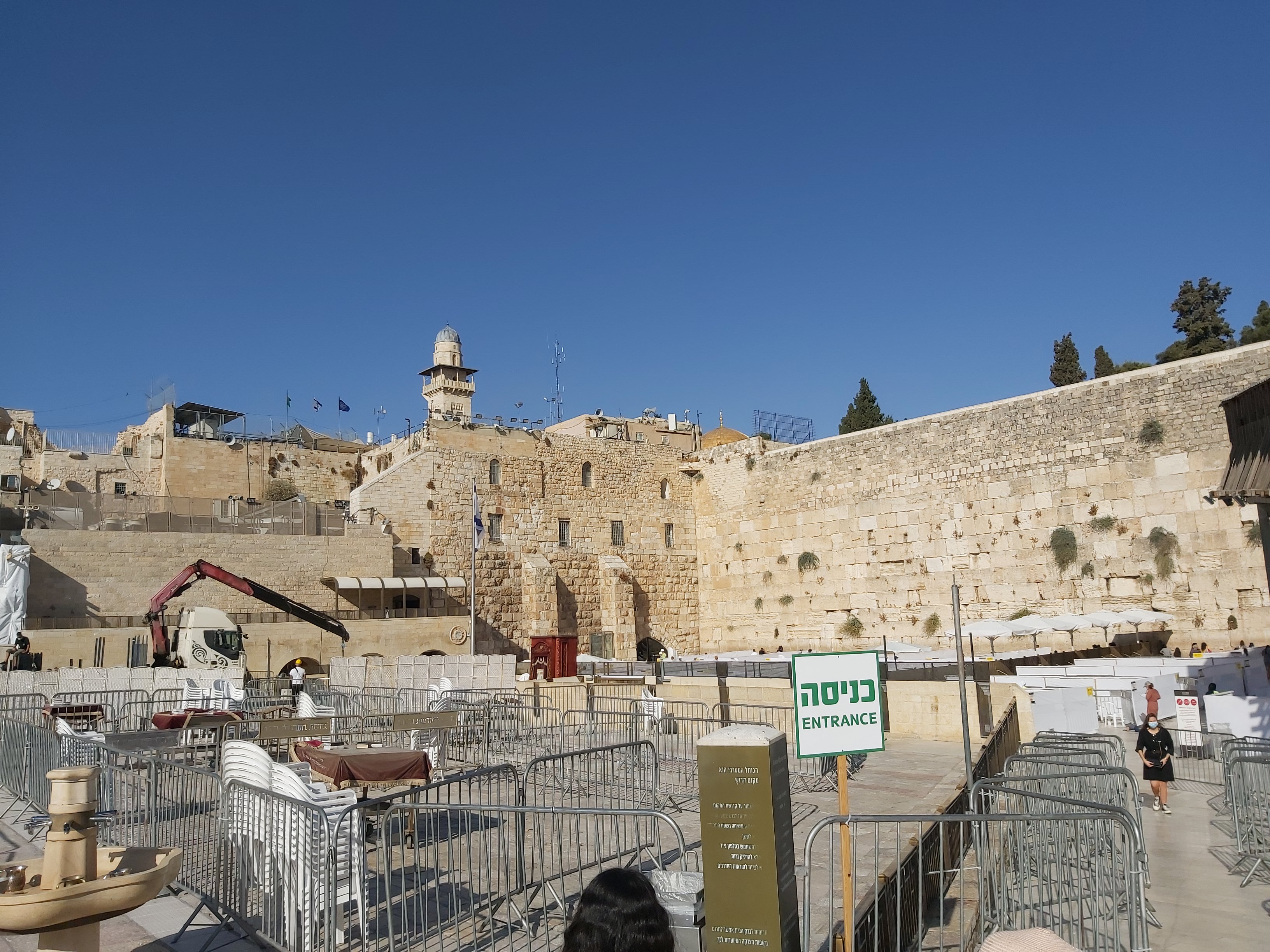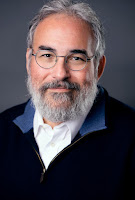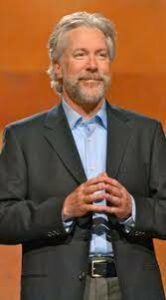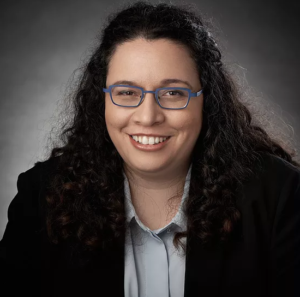…even though we never physically left our homes.
As in my other post, I want to offer in the same-immediacy-writing commitment a glimpse of where I am now sitting, how I am now sitting, and the hope I feel while being here in this fragmented and polarizing era we find ourselves in, in reconsidering citizenship. I honor that it will be, at some level, incomprehensible or easy-to-dismiss from outside the experience. I honor that only a percentage of the 24 students who engaged in this trip will share in what I have to say here. Large percentage? Small percentage? I don’t know. The post-immersion surveys are not all in yet, and even they will be shaped by the ‘authority-sensibilities’ that are inescapable in higher education today. Or in our collective systems. Many of us do not feel free to name our experience bluntly or openly; many of us do not have the skills or language to even name our own experience underneath the shoulds and should-nots of our own particular tribalisms.
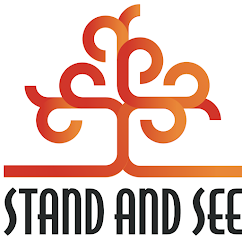 I am bowing to all of that, so to point to what is possible when religious leaders risk into the unknown, and “go out on a limb” for sacred callings in the world. These are the kinds of leaders we need today. Other friends will say wise and soulful, which is also true here for me. I learned a lot about religious leadership guided by the Land of Israel/Palestinian Territories, as rooted in human beings deeply listening to the land, and to one another, made possible by the Stand and See initiative of Clal, the Center for Learning and Leadership with whom I have been in various collaborations over the years. [Shout out here to spirit-friend Brad Hirschfield, btw (here below). The world is a better place because you’re in it].
I am bowing to all of that, so to point to what is possible when religious leaders risk into the unknown, and “go out on a limb” for sacred callings in the world. These are the kinds of leaders we need today. Other friends will say wise and soulful, which is also true here for me. I learned a lot about religious leadership guided by the Land of Israel/Palestinian Territories, as rooted in human beings deeply listening to the land, and to one another, made possible by the Stand and See initiative of Clal, the Center for Learning and Leadership with whom I have been in various collaborations over the years. [Shout out here to spirit-friend Brad Hirschfield, btw (here below). The world is a better place because you’re in it].
Personally, I am relieved to be on this side of the leadership-innovation risk and space-holding. I’m exhausted, with that good kind of post-workout or post-pilgrimage sense of home-coming. These 8-days crafted an intensive-immersion-experience for a faithful learning community, beginning in prayer and being intentional about prayer-postures throughout the 6 hours (or so) we were engaged with the Land and one another on Zoom. That’s at least 45 hours of Zoom in 8 days (as Sunday was optional and brief). It was a huge risk for CLAL, to be honest, to lean into the innovative idea in the first place. It was a huge risk for me as a practical theology professor, unable to feel her way into what it might be, yet trusting the passion and vision of her spirit friends. [Second shout-out here then to Irwin Kula (pictured below), who wove me into CLAL’s wisdom back in 2007, supporting my own work then, and continuing to encourage and confirm what rises in me today.]
From this side, I can see the familiar obstacles at the beginning of any pilgrimage-unmet expectations, frustrations, sadnesses, grief, anger, even crankiness. Normally, this plays out in airline frustrations, missed planes, lost luggage, fear of community members yet unknown, fear of the experience to come. This time, these obstacles played out in my own emotional weather, noted in the previous posting-uncertainty, self-doubt, sadness, grief, empathy, weariness. I’m often an ’emotional kidney’ for these experiences, and I was in this virtual pilgrimage too.
And then there were the familiar concluding waves of emotion and expression at the conclusion of any pilgrimage-deep gratitude, softening of eyes toward one another, closing-thought Torah/teachings, sadness, tears, lingering, acclamations of coming back together, and in this instance, of traveling to the Land in person, now more convicted of its lessons and opportunities available to all persons of faith, especially those of The Book (Jews, Christians, Muslims). Many of us lingered on screen, in that ancient, rabbinic-interpreted sacred-communal-time of wanting to linger with one another as one. I felt the loss of the energetic web I’d been holding the entire time, both with a sense of sadness and with joy-grief, in other words. Relieved and sad/happy.
We were a large pilgrimage group for a Zoom platform event-made necessary by Covid and a bit of a backlog of students requiring immersion experiences to conclude their degree sequence. So the level of engagement with some could be perceived as almost nonexistent. How much were they taking in, while multitasking and being about their ministry or family lives? How much could they engage from their own overwhelm of weariness and Covid-era pastoring? No way to really know, except require screens be ‘on’. And I do empathize with the challenges, even as I note that this virtual option could be argued in old-school habits of mind to underserve those who for whatever reason cannot make the spaces in their lives so to fully engage in voice and focused attention.
Except we saw the level of engagement deepen and increase with more and more of the whole. And those who I expected would not engage for whatever reason, surprised me by engaging fully. The duration of the immersion meant there was a deepening more and more, witnessed in both those who regularly spoke but also in those who, in the words of Rabbi Brad, will now not unsee what they’ve seen, nor unhear what they’ve heard. This option complicates the faculty perception of engagement-no way to know how/what students are taking in-AND it provides a means for all of us, each of us, to be in a more diverse learning community, outside our denominational/traditional tribalisms of attention and welcome.
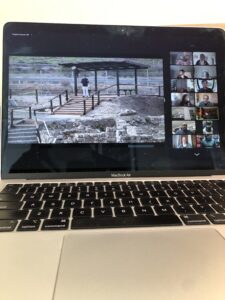 Part of the deepening happened because The Land was speaking to participants of deep faith and passion for their faith, in their own tradition(s). [Here we were at Magdala, led by guide Sakher Rizkallah Peter.] By Day Three, I heard participants speaking of the land as if we were physically there, and I heard the leadership team-including the two guides actually rooted IN the land, ON the land, as they taught-doing that too. The Land began to invite participants to see and hear their own scriptures in a rooted, physically concrete fashion. The theological traditions of the participants began their dance in the learning community-interpretations and questions, inquiries-but with a third presence which brought us all into an equanimity with one another: the Land and its irrepressible realities analyzed and estimated with archeological insight, actual artifacts, and historical narratives at play across traditions. The Land requires us to be in our deeply impassioned and human listening with one another, while more of us are looking in the same direction at the particular artifact. We don’t get completely lost in presumed facts or ideologies, though both of those realities dance their tunes in us while listening to the Land. This Land becomes Holy here by confronting and inviting us, simultaneously, to be rooted and grounded in the world while drawn forward in faith for the World to Come.
Part of the deepening happened because The Land was speaking to participants of deep faith and passion for their faith, in their own tradition(s). [Here we were at Magdala, led by guide Sakher Rizkallah Peter.] By Day Three, I heard participants speaking of the land as if we were physically there, and I heard the leadership team-including the two guides actually rooted IN the land, ON the land, as they taught-doing that too. The Land began to invite participants to see and hear their own scriptures in a rooted, physically concrete fashion. The theological traditions of the participants began their dance in the learning community-interpretations and questions, inquiries-but with a third presence which brought us all into an equanimity with one another: the Land and its irrepressible realities analyzed and estimated with archeological insight, actual artifacts, and historical narratives at play across traditions. The Land requires us to be in our deeply impassioned and human listening with one another, while more of us are looking in the same direction at the particular artifact. We don’t get completely lost in presumed facts or ideologies, though both of those realities dance their tunes in us while listening to the Land. This Land becomes Holy here by confronting and inviting us, simultaneously, to be rooted and grounded in the world while drawn forward in faith for the World to Come.
The learning community was also held and discussions guided by three Jews (of differing streams) within CLAL’s team–two of them ordained rabbis (shout-out to Rabbi Joshua Stanton-and two Protestant ordained Christian teaching-elders (pastors, in Presbyterian-speak–Rev. Dr. Brian Maguire and myself), also companioned each day by a tour guide on the ground-one Jewish (Gary Kamen) and the other Palestinian Christian (Sakher Rizkalla Peter). When the live feed was too fuzzy for good-seeing, there were backup images and videos to rely on, ably provided by a savvy administrator of CLAL (Shout-out to Shelli Aderman here!). Shabbat-night in Jerusalem was a discussion and reflection exercise guided by the live-cam image of the Western Wall. Each of us got to write a prayer that an Orthodox Jew would print out (sight unseen) and place it into the wall for us (electronic website and global ministry offering). Some of the “sites visited” were GoPro camera-videoed and then stewarded by the tour guide. All had images that could be seen while discussion and questions emerged.
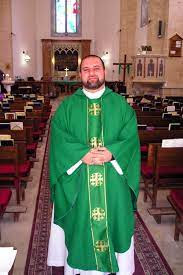
Live-Zoom chats were held with a variety of voices-a Father Nael who is a Palestinian-Arab-Israeli-Christian and Anglican priest in Nazareth (pictured to the left), an activist in Jerusalem tending to political and civic challenges in social justice (Rabbi Noa Sattah, pictured below), two Israeli settlers with a religious calling to live on the land, and Haviva Ner David, a kibbutz-located interspiritualist and Jewish woman-ordained Orthodox rabbi (yes!) and spiritual companion whose ministry is centered in bread, bathing and brightening, within rituals alongside/within a non-denominational mikveh in Israel. And of course, there were more voices missing than were present. It’s easy to take a legal-political habit of mind and critique how this pilgrimage framed the politics of peace and righteous unrest. I’m not neglecting that reality, but I’m also not letting it guide my experience coming into speech here.
One of the most significant learnings that I want my future students to trust me when I say…? Students are able to BE in their own traditions, honored and heart-felt, while also learning alongside and from Jews and Christians learning-teaching-together, alongside Israelis, Palestinians, Americans learning-teaching-listening together. It’s always more complicated than we try to make it inside ourselves, where we will always flatten and divide, so to hold onto our own worldviews. We Christians have inherited a schismatic and textually dualistic way of being in the world–always either/or, rarely both/and while holding the ambiguity. The difficulty is in how we see/expect/assume AND atrophied emotional muscles to surrender into the sovereignty of Godde. Our charism/yearning to connect with all the world so easily translates to complete mis-seeing of others, and a projection outward/onto them of what needs only to be welcomed inward to be assured–blessedly assured.
As I teased my rabbi friend: I love teaching-learning with him because his Torah, his rabbinic heart and spirit, are so very Christlike–a term important to me, if potentially painful for him (but not in this case, as we talked about it). He is impassioned, curious, inviting, honoring, listening, challenging, traditionally rooted, and even verbosely-obstinate for the wisdom of tradition(s). I recognize in him an energy of Wisdom I have known in my Christian journey, a recognizable sacred presence I have come to trust in my journey with the Risen One. It’s a ‘felt-sense’ thing that sacred leaders like myself become willing to trust and learn to intuit, name when they have to, more often leave unnamed in the intimate smile of divine and human coming to Life in the world.
Another participant from a Stand and See journey that my husband (Brian Maguire) helped lead named it well: Sitting and learning with a rabbi who is often more Christian than the Christians on the trip was disorienting and marvelous.
Because Rabbi Brad is who he is, he’s made completely uncomfortable by this description, and it IS uncomfortable in its Christian insider-ism…like the first faltering attempts of the 1960’s Vatican to name others whose wisdom contributed to the world anonymous Christians. Makes me shudder today. It’s these old Christian habits of mind there that make it so important for Christians to hear: Some deeply rooted traditional folks living out of their own traditions can mirror Godde* to us in ways that we Christians cannot, for one another, for ourselves. And vice versa. We need one another; we belong to one another.
There is a personal charism and willingness to trust in the Good News, in a more compassionate future, in the World to Come, in the Kingdom of Godde, that lives a religious leadership in the world that Christians can recognize for themselves as Christian but which need not be named only in Christianity.
[For those of us who have invested in this work for decades, that is obvious and seems naive to have to name aloud. Like the underlying contrast of assumptions: You mean wisdom can be in other traditions beyond my own?! That’s what’s underlying some of this… So many Christians who come into my classroom simply assume that encountering another human being will somehow make them unfaithful in their own faith. So we/they divide and conquer, and miss the scandalous grace of Godde beyond our/their ken.]
This virtual pilgrimage to the Holy Land got underneath how deeply religious tribalisms keep us a part from one another. We learned in a multi-traditional community to be better and wiser in our own traditions. More of us-because certainly there were participants who just endured, so to not be changed-can now see we can honor Wisdom where’er she be found, not only in our own tribe.
Which then opens the gate a bit toward softer hearts, more curious spirits, deepened minds.
But these Christian seminary students were also privy to the overwhelming demands of living a risked leadership life into public, into the unknown. They saw me unsure, uncertain, and challenged by my own decision to trust this rabbinic friend and his utter commitment to innovation during COVID. They saw the fruits that can come when they lean into the discomforts and unknowing, requiring us all to learn together, vulnerably, in public. Religious leaders need to develop spiritual muscles of this kind–a willingness to be foolish and make possible errors in public–instead of looking solely to how their traditions have been interpreted in the historic past, or even present, historically confined.
We have now returned to our world as it is, to our lives as they will now unfold, and as is true with any physically-traveled pilgrimage, I am changed. Many of us have been changed. Thanks be to Godde.*
* I use ‘Godde’ as a spelling of ‘God’ that startles in its difference from expectation. It’s a middle ground way to honor both the masculine and feminine Divine, God/Goddess while recognizing that the Feminine is largely eclipsed by patriarchal traditions and a toxic masculine in the word “God.”

Lisa M Hess, PhD is a companion, poet & scholar at United Theological Seminary (OH) who has delved into community organizing through Circle-Way wisdom lineages (PeerSpirit and Women Writing for (a) Change). She is also a Presbyterian minister (PCUSA), preacher’s wife, spiritual director, and avid Crossfitter who blogs at www.crossfitatmidlife.com and Reconsidering Citizenship.

